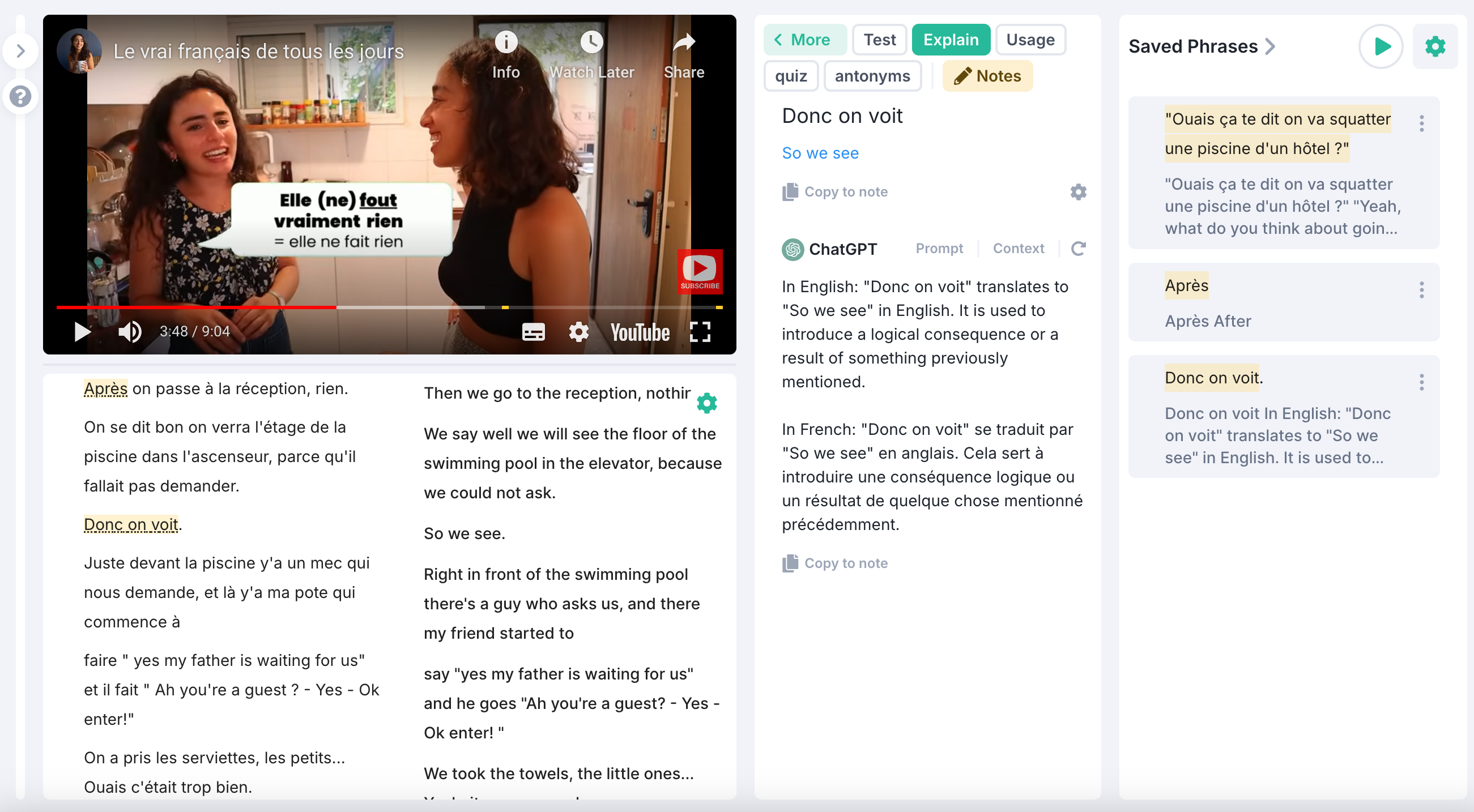Why Listening in Language Learning is the Most Underrated Skill
Read other articles:
Back to posts
Table of Contents
- 1 The Critical Role of Listening in Language Learning
- 2 Why Listening Often Gets Overlooked
- 3 How Listening Supports Other Skills
- 4 Challenges in Developing Listening Skills
- 5 Practical Strategies to Improve Listening in Language Learning
- 6 The Role of Motivation and Lowering the Affective Filter
- 7 How LangMagic Can Enhance Listening Practice

When it comes to mastering a new language, many learners focus on speaking, writing, or grammar drills, while overlooking the importance of listening. However, listening in language learning is a foundational skill that plays a vital role in developing fluency, comprehension, and communication abilities. Without strong listening skills, it becomes difficult to understand native speakers, engage in meaningful conversations, and immerse yourself in a target language effectively. Let’s explore why listening in language learning deserves more attention, how it supports other language skills, and practical strategies to improve it.
The Critical Role of Listening in Language Learning
Listening is a cornerstone of second language acquisition. Stephen Krashen’s Input Hypothesis highlights the importance of receiving comprehensible input—language that is slightly above your current level—to acquire fluency. Listening in language learning provides this input, enabling learners to naturally pick up vocabulary, grammar, and pronunciation through repeated exposure.
Unlike reading or writing, listening immerses learners in the authentic rhythm and cadence of native speakers. This exposure not only improves comprehension but also helps learners internalize speech patterns, making it easier to achieve conversational fluency over time.
Why Listening Often Gets Overlooked
Despite its importance, listening is often undervalued. One reason is that listening doesn’t produce immediate, visible results like speaking or writing does. Learners may feel that listening is passive or ineffective, but in reality, active listening requires focus and mental engagement.

Additionally, traditional language learning environments tend to emphasize grammar rules and speaking exercises over listening practice. As a result, many learners struggle to understand native speakers or real-life conversations, which can feel discouraging.
How Listening Supports Other Skills
It’s important to understand that listening in language learning is interconnected with other skills:
- Speaking: Effective speaking relies on listening. Listening helps learners mimic pronunciation, understand intonation, and master natural phrasing.
- Vocabulary Building: Listening introduces learners to new words in context, helping them grasp meanings and usage without memorization.
- Grammar Understanding: Exposure to correct sentence structures in conversations helps learners develop an intuitive sense of grammar.
By investing in listening practice, learners set the stage for more holistic language development.
Challenges in Developing Listening Skills
While listening is critical, it comes with challenges, such as:
- Connected Speech: Native speakers often blend words together or use contractions, making it hard for learners to identify individual words.
- Accents and Dialects: Variations in pronunciation and vocabulary can be confusing for learners accustomed to a single standard dialect.
- Speed of Speech: Native speakers talk quickly, leaving learners little time to process what they hear.
- Limited Context: Without visual cues, learners may struggle to infer meaning from audio alone.
Practical Strategies to Improve Listening in Language Learning
Improving listening skills takes time and consistent effort. Here are some actionable tips:
- Start with Comprehensible Input: Choose audio or video materials slightly above your current level. Beginner learners can start with slow, clear speech or podcasts designed for language learners.
- Engage in Active Listening: Instead of letting the audio wash over you, focus on picking out keywords, tone, and sentence structure. Summarize what you hear to reinforce understanding.
- Shadow Native Speakers: Mimic native speakers’ pronunciation and intonation by repeating what they say in real-time. This improves rhythm and connected speech.
- Use Subtitles Wisely: Begin with subtitles in the target language to match spoken words with text. Gradually transition to audio-only listening for more immersion.
- Practice with Authentic Materials: Podcasts, audiobooks, and real-world videos expose you to conversational speech patterns and colloquialisms.
- Replay and Repeat: Don’t hesitate to replay challenging sections of audio until you grasp them. Repetition strengthens memory and comprehension.
The Role of Motivation and Lowering the Affective Filter
Stephen Krashen’s Affective Filter Hypothesis emphasizes the emotional aspect of language learning. When learners feel anxious or self-conscious, their ability to absorb language diminishes. To improve listening in language learning, create a relaxed and enjoyable environment. Choose content that excites or interests you, whether it’s music, movies, or podcasts. Lowering the affective filter allows your brain to process and retain information more effectively.
How LangMagic Can Enhance Listening Practice
If you’re looking for tools to improve your listening skills, platforms like LangMagic can make a big difference. LangMagic uses AI to curate content tailored to your proficiency level, ensuring you’re exposed to comprehensible input. With features like interactive transcripts, vocabulary prompts, and contextual explanations, LangMagic helps you actively engage with listening materials. By integrating listening in language learning into your daily routine, you’ll build fluency and confidence faster.

In conclusion, listening in language learning is far from a passive activity—it’s an essential skill that lays the groundwork for fluency, comprehension, and effective communication. While it may not yield instant results, consistent listening practice is one of the most rewarding investments you can make in your language journey.
By embracing listening, engaging with authentic materials, and using tools like LangMagic, you can unlock your full potential as a language learner. Remember, every conversation you listen to brings you one step closer to fluency.
Read other articles:
Back to posts
